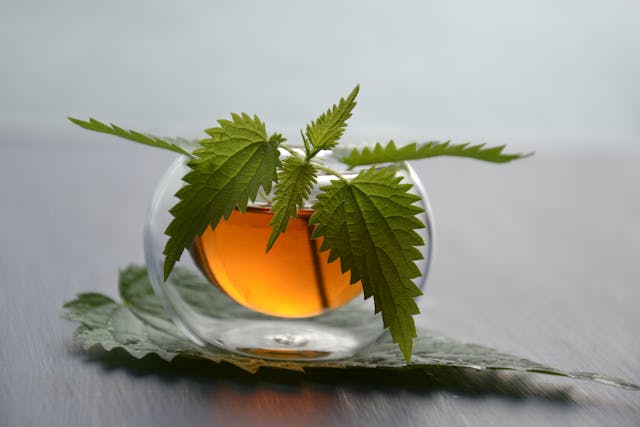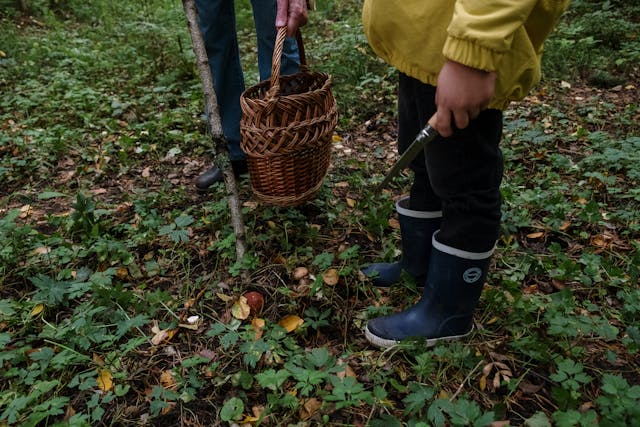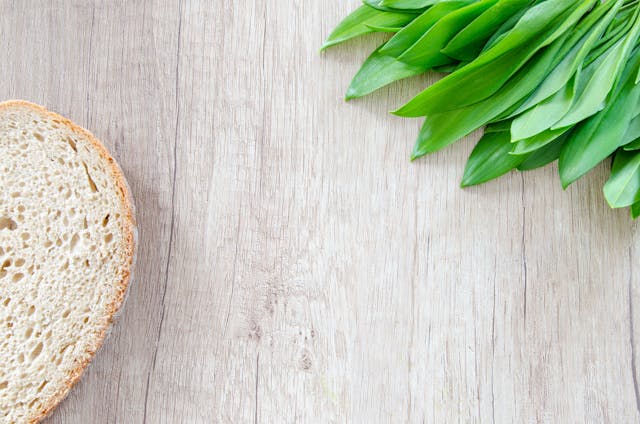Foraging in late winter and early spring might not seem as rewarding as the abundant summer and autumn months, but nature still provides a surprising array of edible delights. February and March offer a chance to reconnect with the land, enjoy fresh, nutrient-packed wild foods, and embrace the age-old practice of gathering what the earth naturally provides. But what exactly can you find, how easy is it to forage, and how healthy are these natural foods?

What’s Available in February and March?
The cold months may not seem ideal for wild food, but some plants thrive even in winter’s grip. Here are a few common (and safe) finds:
- Nettles (Urtica dioica) – A powerhouse of vitamins A, C, K, iron, and protein, young nettles start sprouting in late February. They make an excellent tea or soup but always cook them to neutralize the sting.
- Wild Garlic (Allium ursinum) – The unmistakable aroma of wild garlic fills the air by March. It’s an easy-to-identify, deliciously fragrant herb perfect for pestos, soups, or fresh salads.
- Cleavers (Galium aparine) – Also known as ‘sticky weed,’ cleavers are excellent for detox teas and smoothies. They are packed with antioxidants and aid lymphatic drainage.
- Chickweed (Stellaria media) – A delicate green with a slightly earthy taste, chickweed is rich in vitamins and minerals and works well in salads or as a mild green in soups.
- Dandelion (Taraxacum officinale) – Every part of the dandelion is edible! The young leaves are nutrient-dense and slightly bitter, similar to rocket, while the roots can be roasted into a coffee substitute.
- Wood Sorrel (Oxalis acetosella) – This zesty, lemony green is rich in vitamin C and can be added to salads or used as a natural seasoning.
- Hairy Bittercress (Cardamine hirsuta) – A tiny but mighty green, hairy bittercress has a peppery bite similar to watercress and is easy to sprinkle over dishes.

Is It Easy to Find?
Foraging in early spring does require patience, but once you know where to look, many of these plants are abundant. Nettles often grow near hedgerows and footpaths, wild garlic prefers shady, damp woodlands, and chickweed thrives in urban green spaces. Wood sorrel and cleavers pop up in grassy areas, and dandelions seem to grow everywhere! Identifying these plants correctly is essential, so always cross-check with reliable foraging guides or apps before eating anything.
How Healthy Is Foraged Food?
Foraged foods are packed with vitamins, minerals, and antioxidants, often surpassing cultivated greens in nutrient density. Wild plants grow in natural, nutrient-rich soils without pesticides, making them fresher and more potent than store-bought greens. Many of these wild edibles have medicinal benefits too—nettles support immunity, dandelion aids digestion, and cleavers help detoxify the body. Plus, foraging itself is fantastic for mental health, encouraging mindfulness, outdoor activity, and a deeper connection with nature.

Safety First: Foraging Tips
- Be 100% Sure – Never eat anything you can’t positively identify. Use reputable guides, apps, or take a local foraging course.
- Harvest Responsibly – Only take what you need and leave plenty for wildlife and regeneration.
- Avoid Polluted Areas – Stay clear of roadside plants or those near industrial zones due to contamination risks.
- Test Small Amounts First – Even safe plants can cause allergies. Try a tiny portion first.
- Respect the Law – Some areas have restrictions on foraging, so check local guidelines before picking.

A Simple Foraged Recipe: Wild Garlic Pesto
Ingredients:
- 2 handfuls wild garlic leaves
- 50g nuts (pine nuts, walnuts, or almonds)
- 50g grated Parmesan or nutritional yeast (for vegan version)
- 100ml olive oil
- Juice of ½ lemon
- Salt and pepper to taste
Method:
- Blend all ingredients in a food processor until smooth.
- Taste and adjust seasoning as needed.
- Store in a jar in the fridge and enjoy with pasta, bread, or roasted veggies!

Recommended Foraging App
To help with identification and ensure safe foraging, try using the Seek by iNaturalist app. It allows you to scan plants with your phone’s camera and provides instant identification, making it a great tool for beginner and experienced foragers alike.

Final Thoughts
Foraging in February and March proves that even the cold months hold nature’s hidden bounty. Not only is it a rewarding, cost-free way to source nutritious food, but it also nurtures a sustainable lifestyle and deepens our connection with the earth. So, grab a guidebook, step outside, and see what wild treasures await!
Discover more informative Nomadify blogs on foraging below, along with other related topics that delve into sustainable living, wildcrafting, and nature-inspired well-being. Be sure to explore these insightful reads to deepen your knowledge and enhance your connection with the natural world.
Love Life x
References:
- Mabey, R. (2012). Food for Free. HarperCollins.
- Thayer, S. (2010). The Forager’s Harvest: A Guide to Identifying, Harvesting, and Preparing Edible Wild Plants. Forager’s Harvest Press.
- Grieve, M. (1931). A Modern Herbal. Jonathan Cape.
- Plants for a Future (www.pfaf.org) – Database on edible and medicinal plants.
- Miles Irving, The Forager Handbook (2009).
